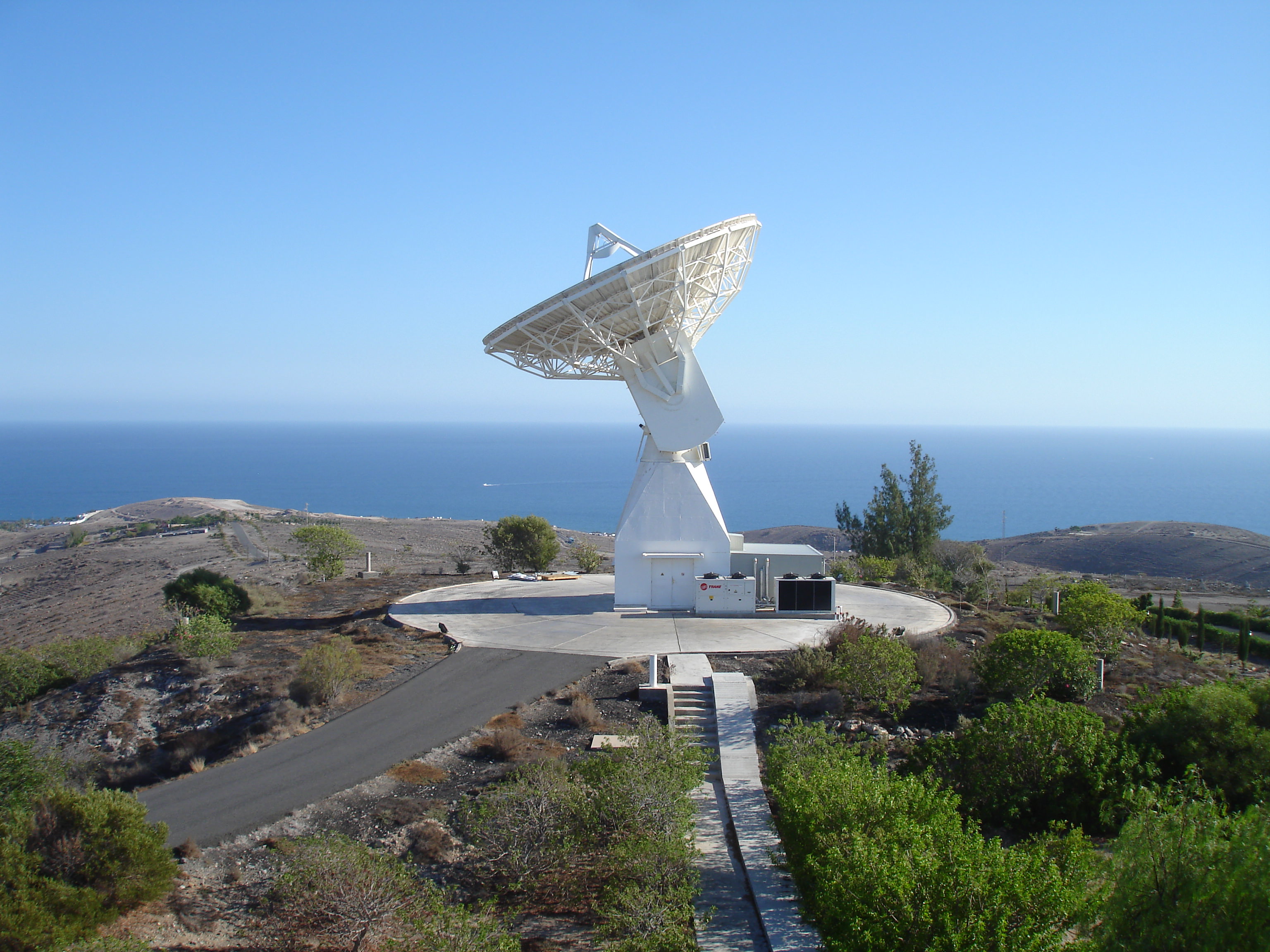[/caption]
Editor’s note: Dr. David Warmflash, principal science lead for the US team from the LIFE experiment on board the Phobos-Grunt spacecraft, provides an update on the mission for Universe Today.
As part of an effort to improve communication with the Russian Space Agency’s Phobos-Grunt spacecraft, modifications are being made to a 15-meter dish antenna at Maspalomas station. Located in the Canary Islands off the Atlantic coast of North Africa, the station provides tracking, telemetry, and other functions in support of the European Space Operations Centre (ESOC) of the European Space Agency (ESA).
Last week, ESA succeeded in communicating with Phobos-Grunt on two successive days after a feedhorn antenna was added to an antenna near Perth, Australia similar to the facility in Maspalomas. Although this enabled the downloading of spacecraft telemetry, attempts later in the week to make renewed contact failed. After no attempts were made over the weekend, commands aimed at getting the spacecraft to boost its orbit were sent yesterday, also from Perth, but tracking this morning revealed that the commands had not been executed.
Launched November 9 from the Baikonur Cosmodrome, in Kazakhstan, Grunt is an unpiloted science probe built to travel to Phobos, the larger of Mars’ two small moons. On board is a science payload consisting of numerous instruments designed to elucidate the structure and origin of Phobos, the composition of its surface material, and possibly dust from Mars that may be present as well. A Chinese probe called Yinhuo-1 is to be delivered into orbit around Mars, while the rest of the payload is to land on the Phobosian surface. Some time after landing, a 200 gram sample of the surface is to be deposited into a capsule which then will launch for a journey back to Earth. Also traveling in the return capsule is the Planetary Society’s Living Interplanetary Flight Experiment (LIFE), which I helped to design. As with the Phobosian surface sample, the LIFE experiment will be valuable scientifically, only if the return capsule can be returned to Earth.
Although Phobos-Grunt was delivered into space nearly three weeks ago by a Zenit 2 rocket launch that appeared flawless, an upper stage rocket known as Fregat failed to ignite. This left the spacecraft in a low Earth orbit that improved as a result of the automated maneuvering, but that will decay by mid-January if the altitude is not boosted more significantly. Because a low orbit requires a spacecraft to move more swiftly with respect to the ground, communication is extremely limited due both to time and geometry. By allowing Maspalomas to operate similarly to Perth, but from its different location, both geometric and time factors affecting communication will be improved. Should this result in the spacecraft executing commands to climb to a higher orbit, further communication and diagnosis of spacecraft systems then would become much easier.
Learn more about the Maspalomas antenna here.


I dispute the categorization of Phobos-Grunt as a “Struggling” Russian Mars probe. Phobos-Grunt isn’t struggling at all and appears to be completely content where it is. It’s the engineers on the ground who are struggling.
even if the pGrunt would have worked normaly and did it`s job, would you believe what the russians would tell you after? What credibility do they have in the world of scientists? Remember for example the battery BS: first they said it will keep 2 days, after a week they said it will last 2 weeks. Now after 1 month they still “struggle” but the spaceship only “talks” to australians …
I don’t have a problem with changing estimates. These are complicated missions in complicated organizations.
Besides, the change was based on updated information:
“Initially, they had about three days from launch to rescue it until the batteries ran out.[11] It was then established that its solar panels had deployed, giving engineers more time to restore control of the spacecraft.”
I would have been very, um, dis-grunted, if they hadn’t changed the estimate openly.
I don’t have a problem with changing estimates. These are complicated missions in complicated organizations.
Besides, the change was based on updated information:
“Initially, they had about three days from launch to rescue it until the batteries ran out.[11] It was then established that its solar panels had deployed, giving engineers more time to restore control of the spacecraft.”
I would have been very, um, dis-grunted, if they hadn’t changed the estimate openly.
common man. can you imagine how severe was the russian space program damaged after fall of soviet? it was terrible time… the people working there was on day in work and next day on street begging for food or die… Just to restore phobos program is already miracle… i hope it will work… i saw many examples of the design, crude but strong… if they can get back to they feet we can see much better future of human in space…
common man. can you imagine how severe was the russian space program damaged after fall of soviet? it was terrible time… the people working there was on day in work and next day on street begging for food or die… Just to restore phobos program is already miracle… i hope it will work… i saw many examples of the design, crude but strong… if they can get back to they feet we can see much better future of human in space…
even if the pGrunt would have worked normaly and did it`s job, would you believe what the russians would tell you after? What credibility do they have in the world of scientists? Remember for example the battery BS: first they said it will keep 2 days, after a week they said it will last 2 weeks. Now after 1 month they still “struggle” but the spaceship only “talks” to australians …
I dispute the categorization of Phobos-Grunt as a “Struggling” Russian Mars probe. Phobos-Grunt isn’t struggling at all and appears to be completely content where it is. It’s the engineers on the ground who are struggling.